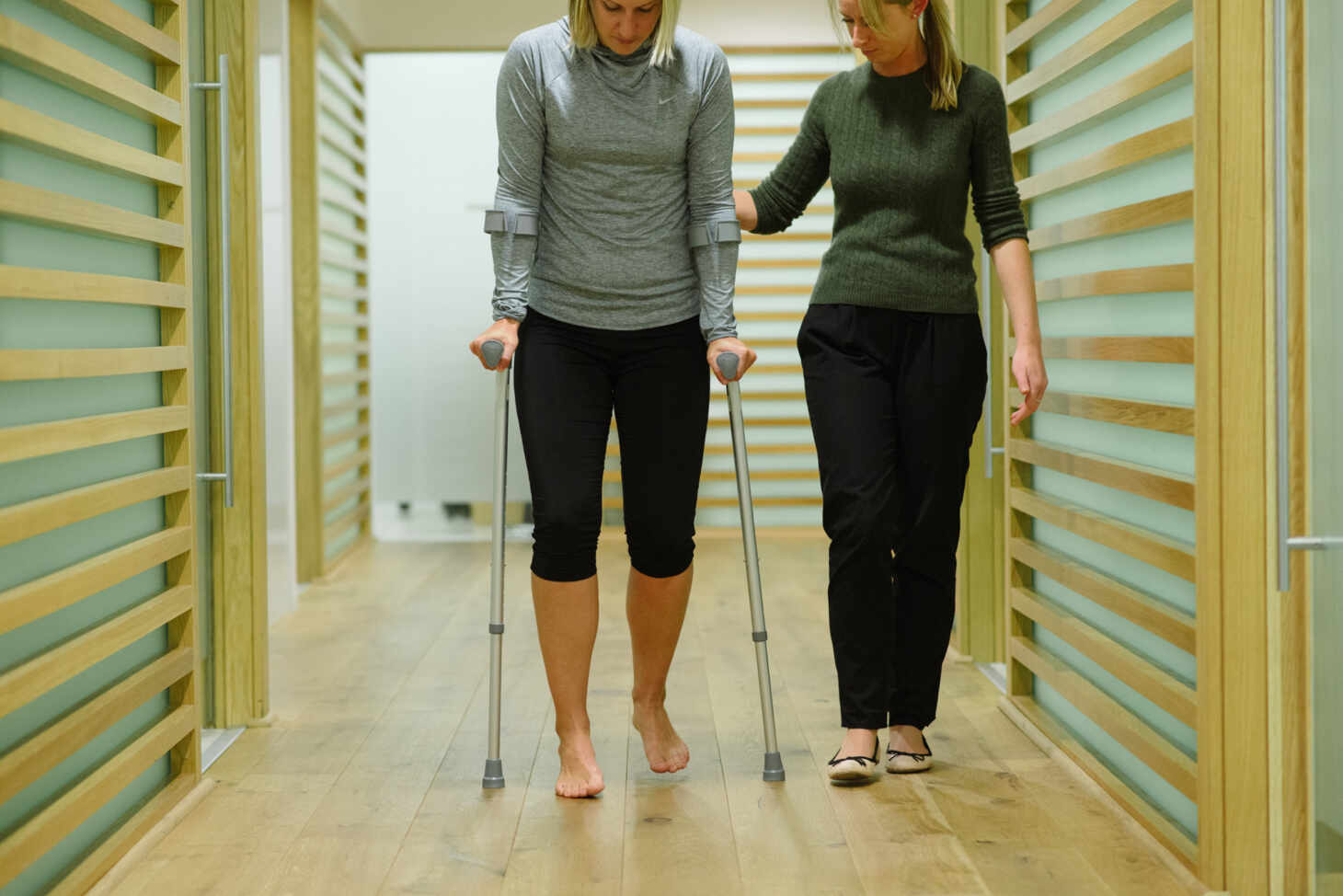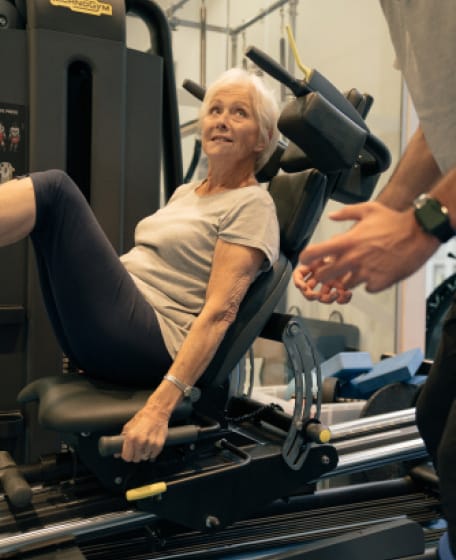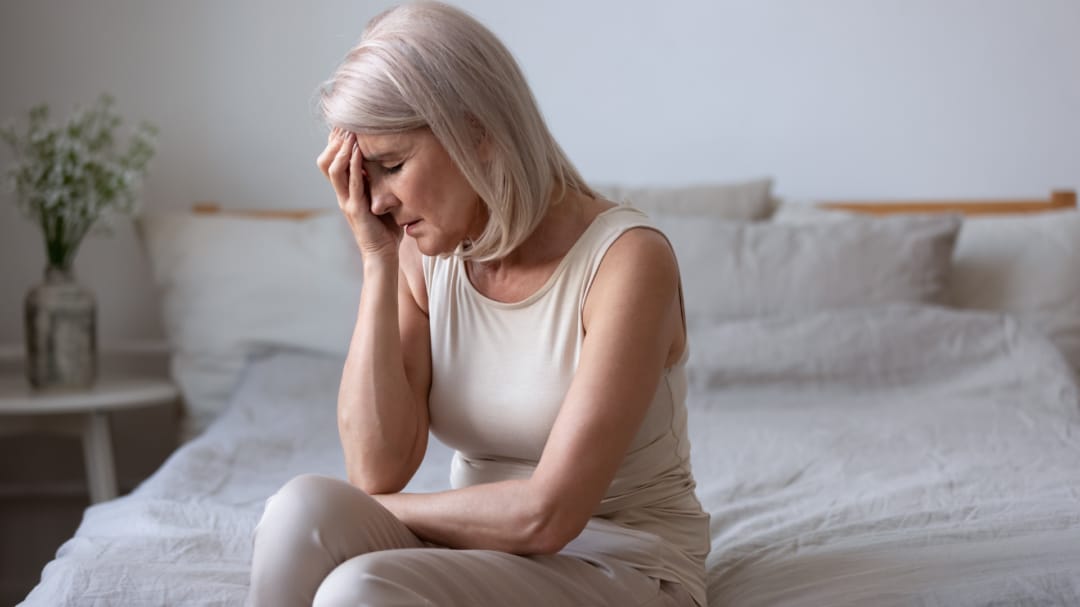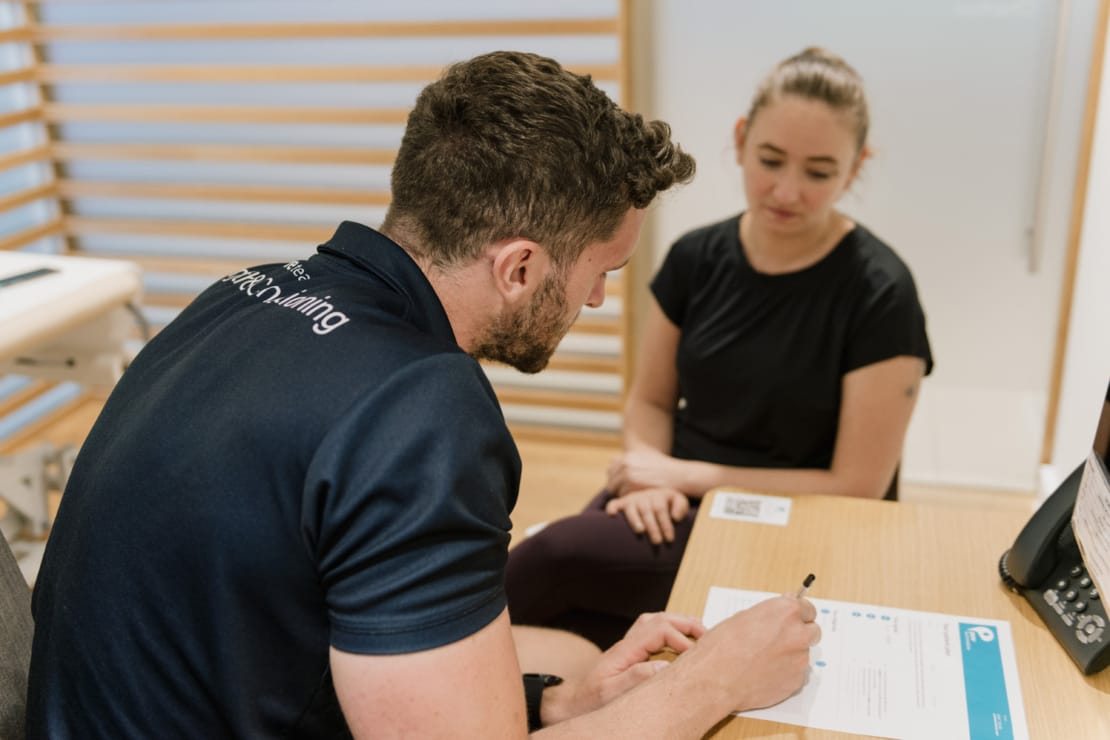Managing Joint Pain During Menopause: Expert Tips for Relief

Claire Small
Chief Clinical Officer & Consultant Physiotherapist
- 20 February, 2025
- Joint Pain
- Menopause
- Women's Health
- 6 min read
Menopause is a natural stage in a woman’s life, marking the common transition that typically begins in the early 40s and can extend into the mid-50s. While hot flushes and irregular periods are often expected, one symptom that can take many by surprise is joint pain.

As oestrogen levels begin to fall during perimenopause and menopause, many women experience stiffness, swelling, and discomfort in their joints. In fact, over 50% of women report some form of arthralgia (joint pain) during this time. The impact can be frustrating, making simple movements feel stiff and exercise more challenging.
But there is some good news: joint pain doesn’t have to define this phase of your life or stop you from doing the things you love. With the right approach, you can take control of your joint health, reduce discomfort, and continue to enjoy an active lifestyle for many years to come.
Why do hormonal changes trigger joint pain?
Oestrogen plays a crucial role in keeping joints strong, supple, and well-lubricated. As levels decline during menopause, the body becomes less effective at controlling inflammation, leading to stiffness, swelling, and discomfort. Many women notice increased friction in their joints, especially in the morning or after periods of inactivity.
Beyond hormonal shifts, other factors can contribute to menopause-related joint pain. One is collagen production, which naturally decreases, making joints more susceptible to wear and tear. Weight gain, a common experience during menopause, is another factor, and places additional pressure on weight-bearing joints like the knees and hips. Lifestyle changes, including reduced physical activity, higher stress levels, and disrupted sleep, can all further contribute to inflammation and discomfort.
Additionally, without proactive joint care, bone density begins to decline, and cartilage weakens, leading to increased risks of conditions like osteoporosis and osteoarthritis. It is therefore vital to take steps to maintain mobility and protect your joint health.
How to Reduce Joint Pain During Menopause
While menopause-related joint pain is common, it is manageable. Small, consistent changes in movement, nutrition, and stress management can make a real difference in how you feel day to day.

Exercise & Movement for Joint Health
Staying active is one of the most effective ways to ease joint pain, improve flexibility, and support long-term mobility. Even just 10 to 15 minutes of daily mobility exercises can help prevent stiffness, and when combined with strength training and low-impact activities, the benefits are even greater.
Once seen as a sport solely for athletes, strength training has become particularly effective in strengthening the muscles around your joints, preserving muscle mass, and supporting bone health. A study in Medicine & Science in Sports & Exercise by the University of Exeter has shown that resistance exercises significantly improve flexibility, balance, and lower limb strength, helping to prevent falls and maintain mobility. Strength and conditioning workouts have also been linked to improved pelvic floor function, better metabolic and hormonal balance, and fewer hot flashes (vasomotor symptoms).
Exercise Physiologist, Emily Martin, says “Exercise not only helps to manage the symptoms women experience throughout the menopause transition but it is typically a very busy time in a woman’s life – potentially moving into leadership or senior roles, looking after a family plus the added stress of maybe not knowing what is going on with your body. I always like to think of it as a form of meditation/self-care; ensure you choose a form of exercise that you enjoy and that you can realistically fit within your day to start achieving the benefits sooner than later! It quickly starts to become part of your routine rather than a chore. It is also going to reduce the likelihood of developing chronic disease and future morbidity.”
In addition to strength training, practices like yoga and Pilates can be incredibly beneficial. Not only do they promote joint flexibility and mobility, but they also offer mental and emotional wellbeing benefits. By incorporating deep stretching and controlled movements, these activities help to reduce stiffness, improve circulation, and ease joint soreness and inflammation.
For a deeper dive into effective workout strategies, check out our expert guide.
Top tip
If menopause-related weight gain has added stress to your joints, making stretching, foam rolling, and dynamic movement part of your routine can help alleviate pressure, keeping you mobile, strong, and pain-free.
Lifestyle Adjustments
Menopause brings significant hormonal shifts, which are commonly linked to weight gain, type 2 diabetes and cardiovascular disease. However, there is evidence that lifestyle factors, such as diet, physical activity, smoking, and alcohol consumption have a major influence on overall health and menopausal symptoms.
By adopting specific lifestyle adjustments, women can not only reduce menopausal symptoms but also improve their joint health and enhance overall wellbeing. Here are some key strategies to consider:
Diet & Nutrition
Diet plays a central role in managing inflammation and supporting overall joint health during menopause. An anti-inflammatory diet rich in omega-3 fatty acids, antioxidants, and essential vitamins can help reduce inflammation, promote bone strength, and support overall joint health. These can include the following:
- Fatty fish: these can include salmon, anchovies and mackerel
- Quality protein: poultry, fish, lean meat, eggs, tofu, legumes, nuts and seeds
- Dark leafy greens: broccoli, spinach and kale
- Berries, nuts, and seeds: raspberries, walnuts, almonds, chia seeds
- Dairy products: aim for two to three servings of calcium-rich foods daily, such as yoghurt, cheese, and leafy greens to support bone mineral density
- Fibre-rich foods: wholegrains, legumes, nuts, seeds support the gut microbiota, which plays an active role in maintaining gut barrier integrity
- Phytoestrogens: foods like soy, flaxseeds, and legumes contain plant-based oestrogens that help support bone density.
Micronutrients include:
- Vitamin C: supports collagen production, which helps maintain cartilage health.
- Vitamin D, K, calcium, and magnesium: essential vitamins and minerals for bone density and joint strength.
Nutritionist, Clem Cleave, says, “The menopause transition is a time when the body reminds us just how crucial our diet is for many functions. Eating a balanced and diverse diet rich in plant-based foods supports a healthy gut microbiota, which in turn helps modulate oestrogen levels, reduce inflammation, and improve glucose response. Foods rich in omega-3, soy, colourful vegetables, whole grains, legumes, nuts, and seeds should take centre stage on our plates.”
Staying hydrated helps to maintain joint mobility but limits refined sugars (seen in biscuits or cakes), excessive caffeine, and alcohol, all of which can contribute to joint inflammation and bone density loss.
Managing Stress and Improving Sleep Quality
Stress can often lead to poor sleep quality and heightened cortisol levels, which in turn can worsen fatigue, inflammation, and joint pain. Incorporating relaxation techniques can help counteract these effects and promote overall wellbeing. Practices such as meditation, deep breathing exercises, and progressive muscle relaxation can lower cortisol levels, while regular exercise not only relieves tension but also enhances mood and improves sleep quality.
Since sleep is essential for muscle and joint recovery, menopause-related hormonal changes can result in disrupted sleep and exhaustion. Establishing a consistent bedtime routine can help regulate the body’s internal clock while ensuring a comfortable sleep environment with supportive bedding can alleviate joint discomfort and improve overall rest.
How can you treat menopause joint pain?
While there is not a ‘one size fits all’ cure for managing menopause symptoms, a combination of approaches can help provide effective relief and improve overall wellbeing. Finding what works best for you may take time, but with the right support, you can ease joint pain and regain mobility.
- Physiotherapy: highly effective in reducing stiffness, improving circulation, and enhancing joint flexibility. Targeted exercises and massage techniques can alleviate discomfort, while physio-led Pilates offers the perfect blend of movement and support, particularly for those with arthritis, joint hypermobility, or chronic pain.
- Supplements & Medications: omega-3 fatty acids and glucosamine are often recommended for their anti-inflammatory properties, while prescribed anti-inflammatory medications can provide further relief.
- Hormone Replacement Therapy (HRT): HRT helps to replenish declining oestrogen or progestogen levels. The National Institute for Health and Care Excellence (NICE) has updated its guidelines to ensure women receive personalised advice when considering HRT to alleviate menopause symptoms.
- Holistic Therapies: dry needling and acupuncture have been reported to alleviate pain in the joints and provide additional support.
It is important to remember that every woman’s experience with menopause is unique, and what works for one person may not be as effective for another. Exploring different treatment options and consulting with a healthcare professional can help you find the best approach for your needs.
For more insights, explore our essential tips on managing menopause symptoms.
When to Seek Professional Help
While lifestyle adjustments can make a big difference in managing menopause-related joint pain, some symptoms may still require medical attention. If you experience persistent or worsening joint pain, swelling or reduced mobility, it’s important to seek professional care.
If joint pain is affecting your daily life, we’re here to help. At Pure Sports Clinic, our expert Rheumatology and Pain Management Specialists can assess your symptoms, provide a diagnosis and work with you to develop a personalised treatment plan designed to help you regain mobility, reduce pain, and improve your overall quality of life. This may include Physiotherapy, Strength and Conditioning, Pain Management, or medical interventions such as joint injections – we work with you to find the best approach for your needs.
With the right support, we can help you to move with greater ease and confidence. Book an assessment or sign up for our pain management programme to receive expert guidance on managing joint pain effectively.
Prioritise your joint health and take the next step toward a pain-free, active life

Advice
Over the last 20+ years our experts have helped more than 100,000 patients, but we don’t stop there. We also like to share our knowledge and insight to help people lead healthier lives, and here you will find our extensive library of advice on a variety of topics to help you do the same.
OUR ADVICE HUBS See all Advice Hubs

